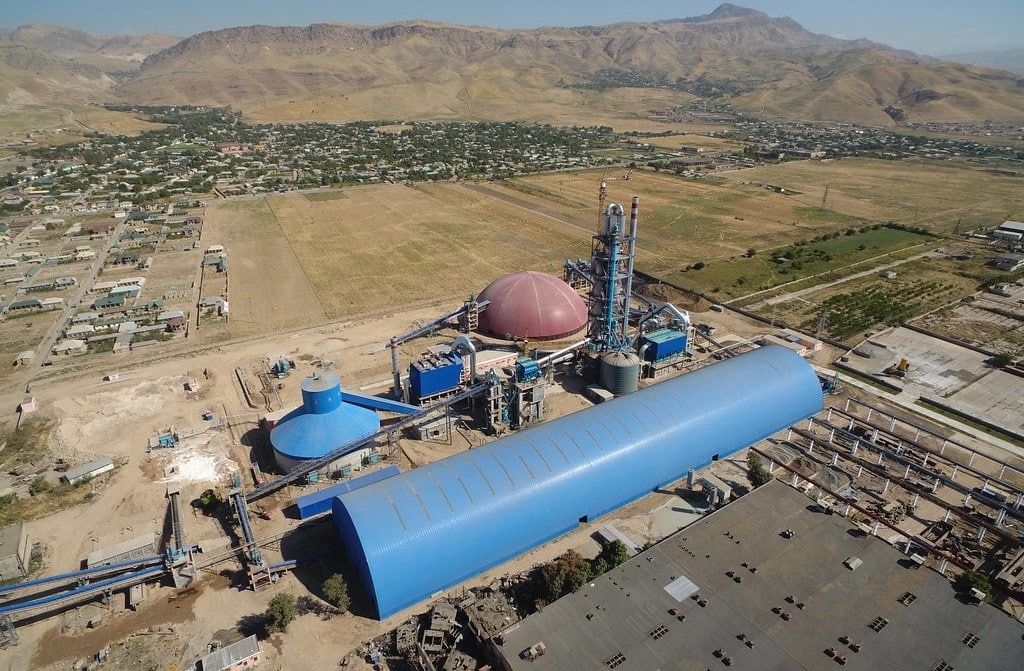Tajikistan’s lower chamber (Majlisi Namoyandagon) of parliament has ratified an agreement between the government of Tajikistan and Orien Invest Company on construction of a cement plant with annual capacity of 1.8 million tons in Qubodiyon district of Khatlon province.
This issues was discussed at a regular sitting of the Majlisi Namoyandagon, presided over by its head, Mahmadtohir Zokirzoda, which took place on November 17.
An agreement on construction of this cement plant was signed between the Government of Tajikistan, represented by the State Committee on Investment and State-owned Property Management (GosKomInvest), and Orien Invest Company on September 7 this year.
To construct and introduce the cement plant into operation, Orien Invest, which is an investment-and-production company, reportedly plans to attract 160 million U.S. dollars in foreign direct investment.
According to the Majlisi Namoyandagon press center, the new cement plant will create 1,300 new jobs for local population.
It means that it will be Tajikistan’s largest cement plant.
According to data from the Ministry of Industry and New Technologies (MoINT), Tajikistan has produced more than 3.2 million tons of cement over the first nine months of this year, which was 0.7 percent fewer than in the same period last year.
Last year, Tajikistan produced more than 4.2 million tons of cement.
In 2020, Tajikistan produced 4.2 million tons of cement.
In 2019, Tajikistan produced 4.2 million of cement in 2019, which was 400,000 tons more than in 2018. In 2018, Tajikistan produced 3.8 million tons of cement.
Production of cement is expected to increase to 7 million tons in 2024.
Tajikistan began exporting cement to neighboring countries. Uzbekistan, Kyrgyzstan and Afghanistan are the major trading partners for Tajikistan’s cement exports.
In 2015 and it exported only some 500 tons of cement in that year.
In 2016, Tajikistan’s cement exports amounted to little more than 282,000 tons of cement.
In 2017, Tajikistan exported little more than one million tons of cement.
In 2020, Tajikistan’s cement exports reportedly were 1.3 million tons; Uzbekistan imported 764,000 tons, Afghanistan imported 505,000 tons and Kyrgyzstan imported 42,000 tons.
A MoINT has predicted a 46% increase in cement exports to 1.9Mt/yr by 2023.
Meanwhile, the Ministry of Economic Development and Trade (MEDT) has predicted annual 200,000-ton increase in cement exports by 2024\
Sixteen enterprises with a total capacity of 5.6 tons are now engaged in producing cement in Tajikistan.
Tajik-Chinese joint ventures Chzhungtsai Mohir Cement, Huaxin Gayur Cement, and Huaxin Gayur Sughd Cement accounted for some 90 percent of the local cement production respectively.
Tajikistan has increased production of cement significantly in recent years due to launching new Tajik-Chinese joint ventures. Over the last ten years, production of cement has increased in Tajikistan nearly ten times.
However, such achievements of Tajikistan’s industry evoke concern of ecologists, who consider that excessive increase in cement production may cause irreparable harm to the country’s environment.
According to them, more polluting plants in China are forced to shut down or pay the costs of environmental damage in the wake of new laws and a crackdown on pollution. Cement is one of the world’s most polluting industries, and therefore, Chinese producers have moved excess capacity offshore. The Chinese cement plants mainly use coal for their fuel. The companies reportedly claim that their plants are using advanced environmental and energy saving technology, without specifying exact standards.




